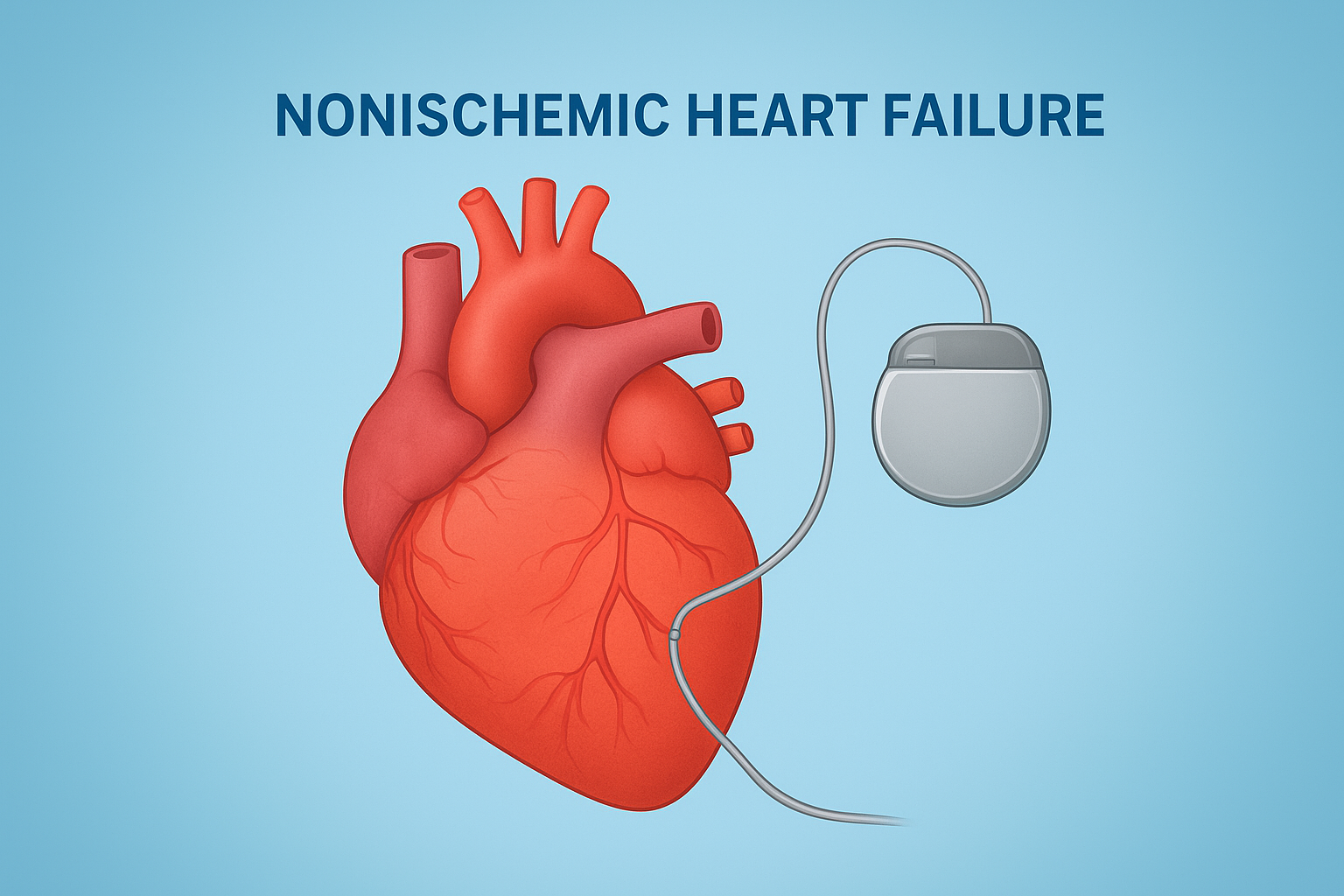
The extended follow-up of the DANISH trial, published in the Journal of the American College of Cardiology on October 22, 2025, provides critical long-term insights into the role of primary prevention implantable cardioverter-defibrillators (ICDs) in patients with nonischemic heart failure with reduced ejection fraction (HFrEF). Originally published in 2016 with a median follow-up of 5.6 years, the trial showed no significant reduction in all-cause mortality with ICDs. This new analysis extends median follow-up to 13.2 years (IQR 11.6–14.6 years), tracking 1,116 randomized patients until death or January 31, 2024.
Over the extended period, 52.9% of the ICD group and 53.4% of the control group died, yielding no significant difference in all-cause mortality (HR 0.96; 95% CI 0.82–1.13). However, ICD implantation robustly reduced sudden cardiovascular death (HR 0.54; 95% CI 0.36–0.80), confirming its mechanistic efficacy in preventing arrhythmic mortality. A key finding is the significant age interaction: patients aged ≤70 years experienced a 62% reduction in sudden CV death (HR 0.38; 95% CI 0.23–0.62), while those >70 years showed no benefit (HR 1.27; 95% CI 0.56–2.89; P interaction = 0.01). This age-dependent effect persisted in continuous analysis and was independent of baseline cardiac resynchronization therapy (CRT) use.
Cause-of-death patterns evolved over time. In the original follow-up, 28% of deaths were sudden; this fell to 18% in the extended phase, while non-sudden cardiovascular and non-cardiovascular deaths rose, particularly in older patients. This shift likely explains the diminishing relative impact of ICDs on overall survival as competing risks dominate in aging populations. Subgroup analyses confirmed consistency across CRT use, sex, and other clinical variables, except age. The trial’s Danish setting, with high uptake of guideline-directed medical therapy (GDMT)—including beta-blockers, ACE inhibitors/ARBs, and mineralocorticoid antagonists—may have contributed to low baseline sudden death rates, further limiting ICD benefit on total mortality.
These findings challenge broad primary prevention ICD use in nonischemic HFrEF, particularly in older adults. Clinicians should integrate age, comorbidity burden, and patient preferences into shared decision-making. Future guidelines may incorporate age thresholds or risk stratification tools to optimize ICD candidacy. Ongoing trials evaluating contemporary GDMT, including SGLT2 inhibitors and ARNI, will further clarify ICD utility in modern HFrEF management.
Link: https://www.sciencedirect.com/science/article/abs/pii/S0735109725077654

